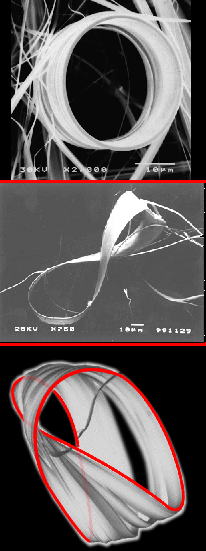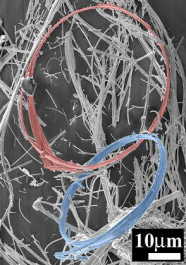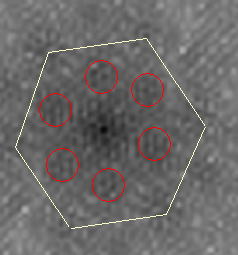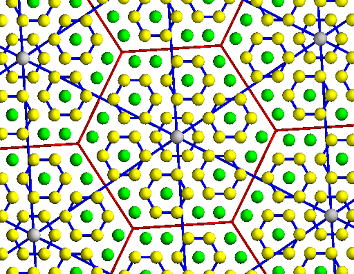

Snowflakes are letters from heaven.
In 1936 Prof. Ukichiro Nakaya had succeeded to make artificial snow at
Hokkaido university. He showed that small difference at the growing condition
produces various structures of snow crystals. After him, anomalous shapes
of crystals have been created in crystallography. At last, we discovered
the topological crystals. They are classified by the concept of topology.
Topology is one of the subjects in mathematics that argued size-independent
universality of mathematical structures. This concept is necessary to understand
the unconventional topologically-nontrivial forms of the crystals. We investigate
universality of mathematical structures in crystallography at the viewpoint
of topology.
![]()
 |
Crystals are usually the materials in which the atoms align periodically.
However, the topological crystals are locally corresponding to the usual crystals locally but globally not because the
ends of the crystals are connected.
The crystals are rings.
Moreover, the twisted rings such as the Moebius rings with p twist and figure-of-eight loops with 2p twist have been discovered. These forms can be categorized using topology,
and the crystals cannot be changed its topological form without cutting
of chemical bonding. The topological property of crystals has been neglected
in crystallography for the bulk crystals. Our discovery has opened new
era of crystallography at the viewpoint of topology. Figure 1. Topological crystals Ring, figure-of-eight, and Moebius ring of crystals Satoshi Tanda, Taku Tsuneta, Yoshitoshi Okajima, Katsuhiko Inagaki, Kazuhiko Yamaya, and Noriyuki Hatakenaka@Nature 417, (2002) 397 |
![]()
 |
Exotic topological crystals, such as ring-shaped crystals,
Moebius strips of crystals, and figure-of-eight (2p-twisted strip)
crystals, have been successfully created in NbSe3, despite
their inherent crystal rigidity. Recently, we discovered new
topological crystals in TaSe3, which are two ring-shaped crystals
linked to each other exactly at once. Due to the link the two rings
cannot be separated without cutting of chemical bonding.
The topology of the crystal form is called a "Hopf link", which is
the simplest link involving just two component unknots linked
together exactly once. The Hopf link topology must be
categorized using the concept of manifold-embedding.
These crystals have been expected to open new fields of
quantum mechanics on the nontrivial topological space and
crystallography on topological boundary conditions.
Figure 2. Realized Hopf link topology in crystallography J. Cryst. Growth 297 (2006) 157, T. Matsuura, M. Yamanaka, N. Hatakenaka, T. Matsuyama, and S. Tanda |
  |
Some crystals have anisotropic growth and conductivity due to the crystal
structures. Transition metal trichalcogenide is the typical one. One transition
metal atom and three chalcogen atoms are accumulated and growth one dimensionality.
The conductivity is also one-dimensional. Therefore, such low-dimensional
materials exhibit peculiar ground states not shown in three dimensional
systems. Density waves (CDW and SDW), integer and fractional quantum Hall
states, Tomonaga-Luttinger liquid state are good example of ground state
of the low dimensional electron systems. Usual dimensionality control methods
can be categorized three types.
Figure 3. Hierarchical charge density wave structures caused by k-space topology in nano crystals Seven atoms make a cluster, then seven clusters make a super cluster. T. Toshima. K. Inagaki. N. Hatakenaka. S. Tanda. J.Phys Soc. Japan 75 (2006) p024706 |